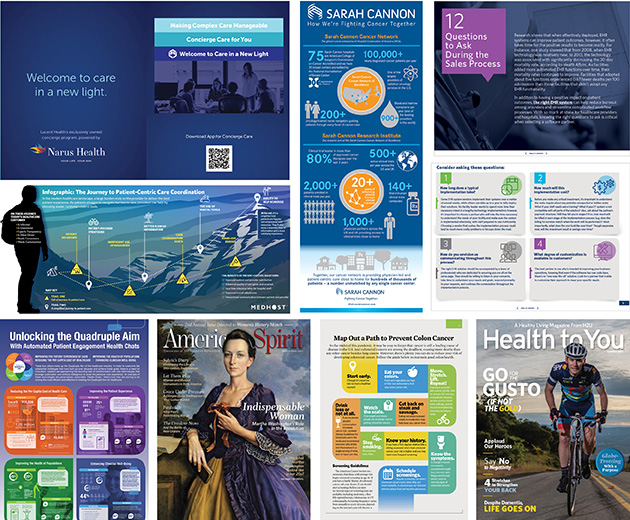



By Megan Hamby, Editorial Director
In 2017, Adidas sent an email to Boston Marathon finishers, with the subject line, “Congrats, you survived the Boston Marathon!”
I know what you’re probably thinking: “Oh no.” Just four years after the Boston Marathon bombing killed three people and injured 280, the sportswear giant sent this tone-deaf and insensitive email.
Even though the company issued a public apology on its social media accounts a few hours later, this blunder has become an object lesson to marketers, as one of the worst high-profile email mistakes we’ve ever seen.
As a marketer, you might be thinking, “Our company would never send something as egregious as that.” But without the right checks and balances in place, even the most seasoned marketers can press send on an email that could be read as insensitive or offensive.
So how can you avoid putting your foot in your mouth in your email marketing campaigns?
About Hammock Healthcare Idea Email | This post is part of Hammock’s award-winning Idea Email series. Idea Emails are sent every other week and share one insightful marketing idea. Idea Email comes in two flavors: Original and Healthcare. To subscribe to the original Idea Email (general marketing ideas), click here. To subscribe to the Healthcare Idea Email (healthcare marketing ideas), click here.

By John Lavey
You can find a lot of marketing content making the claim that human attention span is now shorter than that of a goldfish, but this seems to be unscientific research used by marketers to help pitch video as a replacement for text-based content.
But we do know getting audience attention is a huge challenge for marketers. Whether the problem is a shorter attention span, a general failure to provide engaging content, or both, a solution is needed.
One place to start is by creating websites that work. Websites often fail at answering one basic question: “What do you do?” That’s because, in part, the story is spread across different sections of the site, and the format that we have become used to expects us to click across a top navigation bar to get the answers we need.
One content tool that cuts through the clutter is explainer videos. Explainer videos are perfectly named. They explain what you do. This is particularly helpful if your solution is complicated or abstract. You don’t need an explainer video to market Coca-Cola, but you might need it to sell an SaaS platform that addresses a critical niche problem.
Here’s a test. Try to explain to your kids or to a casual acquaintance what you do. If you find yourself struggling to make an elevator pitch that is super clear and concise, you probably need an explainer video. If your kids’ eyes glaze over, then you need an explainer video. (Note: It would be highly unusual if your kids showed that level of interest in what you do, so you need something easy for them to remember.)
Explainer videos are usually 45 seconds to 90 seconds long. They often use simple animation with illustrations or photography, typography, music and voice-overs. You can build the imagery from scratch or use stock imagery creatively to tell the story. They have energy to propel the narrative, and when done well, they convey the problem the audience faces, what the solution looks like, and what the outcome will be.
Putting explainer videos on a prominent place on your website can go a long way toward making it easier to understand the value of your offering. Even if the attention span is closer to that of a goldfish (whatever that might actually be).
About Hammock Healthcare Idea Email | This post is part of Hammock’s award-winning Idea Email series. Idea Emails are sent every other week and share one insightful marketing idea. Idea Email comes in two flavors: Original and Healthcare. To subscribe to the original Idea Email (general marketing ideas), click here. To subscribe to the Healthcare Idea Email (healthcare marketing ideas), click here.

By Jeff Walter, Senior Editor
Everybody knows that search engine optimization (SEO) is crucial to 21st-century businesses vying for online market share, but it shouldn’t take precedence over the customer experience.
That last part is the main takeaway of Google’s new search algorithm, which it has dubbed the “helpful content update.” This change, the technology giant says, is “part of a broader effort to ensure people see more original, helpful content written by people, for people, in search results.” The update, announced August 18, was set to begin rolling out last week.
In a nutshell, the new system works by deploying a signal that detects and penalizes sites with high amounts of unhelpful content. Even helpful content will be less likely to perform well if other content on the same site is not helpful. This emphasis on quality over quantity means some businesses would be advised to remove website content that falls short of the standard.
What distinguishes helpful content from its evil twin?
To Google, it’s a matter of whether it was created primarily for people (and by people) or for search engines. Would the intended audience find the content useful, or feel let down by “click bait”? Does it demonstrate firsthand expertise, or is it simply others’ recycled wisdom with no value added? Will readers learn anything from it? Will they have a satisfying experience?
While analytics, traffic monitoring and website scanning can help organizations assess how they are faring with the new algorithm, a bit of soul-searching is also in order: What is the real purpose of the content we’re providing? At Hammock, we’ve long preached the gospel of “help not hype.” That means taking time to get to know the audience and what kind of information is likely to engage them, and then delivering it. Data, perhaps? How-to guides? Informed predictions about coming trends?
If you haven’t been providing helpful content, it’s not too late to change your ways. The pressure is on to share what you know!
About Hammock Healthcare Idea Email | This post is part of Hammock’s award-winning Idea Email series. Idea Emails are sent every other week and share one insightful marketing idea. Idea Email comes in two flavors: Original and Healthcare. To subscribe to the original Idea Email (general marketing ideas), click here. To subscribe to the Healthcare Idea Email (healthcare marketing ideas), click here.

By John Lavey, President
We view helpful content as one of the highest forms of marketing. Helpful content is superior marketing to content that hypes a solution.
Sometimes the most helpful kind of content, particularly for B2B marketing, is educating your customers and creating resources that they can use to do their jobs more effectively.
Helping educate your audience to help them be better at their jobs can take many forms. Here are three ideas:
User conferences
Many of our clients host user conferences, assembling a curriculum to introduce customers to the latest and best ideas about their job. These two-day or three-day events are big lifts for companies to put on, and they can be expensive, but they are viewed positively by customers.
Client universities
Some clients we’ve worked with have adopted the idea of themselves as a university, continually teaching their customers how to be better at their job. When the customers are a channel seller of their solution, it’s not only helpful but also savvy. The university model differs from the user conference model to the extent that the teaching and the messaging last beyond the three-day span. The investment in that kind of marketing spans year round.
Library of resources
This kind of content marketing offers clients a library of resources to help them do their jobs. Providing presentation decks, e-books, videos and more, marked with their branding so they can use them in their marketing or sales to clients, is good content marketing.
How can you help teach your client and sharpen your content marketing?
About Hammock Healthcare Idea Email | This post is part of Hammock’s award-winning Idea Email series. Idea Emails are sent every other week and share one insightful marketing idea. Idea Email comes in two flavors: Original and Healthcare. To subscribe to the original Idea Email (general marketing ideas), click here. To subscribe to the Healthcare Idea Email (healthcare marketing ideas), click here.

By John Lavey, President
With the labor market as tight as it is, it has never been harder to attract and retain talent. If your company is like some, the move to remote work means that you are no longer just competing with companies in your geographic area; you are competing against the rest of the world for the best people in your industry.
Finding ways to stand out from the competition and truly engage potential candidates for hire is hard to do, but using video to assist your recruiting efforts is a dynamic way to meet that challenge.
Short videos that tell authentic stories about who you are and why someone would want to work with you right now can cut through the details you will likely have to share in a job posting.
Here are some of the tips for what you will want in an effective video to accompany your recruitment postings:
Short—The most popular format for viewing videos right now is on TikTok, and the sweet spot for length of video there is 7 seconds to 15 seconds. Chances are you can’t communicate the value of a role in a TikTok video, but you should aim for brevity. There are industry-specific and platform-specific standards, but getting a video to 1 minute is a good goal.
Authentic—Letting your passion come through about your mission as an organization and why you care about what you do is important. It’s not so much what you say as how you say it. That energy is contagious.
Clear—Get to the point quickly, or create a clear call to action about what they can do next if interested. The platforms themselves can provide an assist here. But if it’s important, for example, to make it clear whether you are open to remote work, say it out loud.
Storytelling content is a critical part of every stakeholder journey, not just your customer journeys. Think about how you can help your prospective employees at each stage of their search. Video can help.
Image: Getty Images
About Hammock Healthcare Idea Email | This post is part of Hammock’s award-winning Idea Email series. Idea Emails are sent every other week and share one insightful marketing idea. Idea Email comes in two flavors: Original and Healthcare. To subscribe to the original Idea Email (general marketing ideas), click here. To subscribe to the Healthcare Idea Email (healthcare marketing ideas), click here.

By Megan Hamby, Editorial Director
As marketers, we can often get bogged down in adhering to the “rules” or best practices of content marketing. How often should we post on social media? What’s the best time to send a weekly newsletter to customers? How frequently should we update our blog?
And the list goes on and on.
Do a quick Google search on “content marketing best practices” and you’ll find about 580 million results. And that advice is worthwhile—understanding your audience and buyer’s journey, using data and analytics, repurposing your content, and determining your brand messaging are all incredibly important when it comes to content marketing.
But I have another suggestion: Don’t be afraid to break the rules and do what works best for your company.
Recently, our team was speaking with the senior content specialist for one of our clients. He schedules a weekly newsletter to be delivered to customers and prospects every Friday at 5 p.m. EST.
That sounds crazy, right? Many studies suggest that the best time to send B2B emails is around 10 a.m. in the middle of the week. With that research in mind, sending an email at 5 o’clock on a Friday afternoon seems counterintuitive—but for this client, it works. He shared with us that his company has a 35% open rate (industry benchmarks are 17–28%) and receives 250–300 clicks on each email. When he shared this information with us, I was impressed—but also not surprised. That email newsletter is often the last email I receive before signing off on Friday afternoons, so I am guaranteed to open and read it. Our client wasn’t afraid to break the “rules” of email marketing—and his creative thinking yielded positive results.
What are some ways that your company can be creative with your marketing efforts? Contact us today if we can help.
Image: Getty Images
About Hammock Healthcare Idea Email | This post is part of Hammock’s award-winning Idea Email series. Idea Emails are sent every other week and share one insightful marketing idea. Idea Email comes in two flavors: Original and Healthcare. To subscribe to the original Idea Email (general marketing ideas), click here . To subscribe to the Healthcare Idea Email (healthcare marketing ideas), click here.

By Megan Hamby, Editorial Director
In 1988, four men from Jamaica made history when they entered the bobsleigh race during the Winter Olympics in Calgary, Alberta, Canada. Jamaica—a country whose tropical climate keeps it warm year-round—had never competed in the Winter Games before. But after seeing a local pushcart derby, two American businessmen living in Jamaica proposed forming a bobsleigh team—and earned the support of the country’s Olympic Association.
Now, a Jamaican bobsleigh team is sure to attract attention no matter what. But when the U.S. ice hockey team was eliminated, American media stations needed to fill airtime—and chose to focus instead on the Jamaican bobsleigh team’s four-man event, leading even more people to learn of this unlikely team.
Jamaica’s appearance at the 1988 Winter Olympics inspired the 1993 movie Cool Runnings, which was a box office success and grossed $154.9 million worldwide.
Now, 34 years later, people still know about the Jamaican bobsleigh team that made history—despite not even placing in the top 10. Why? It’s an amazing story.
When we watch the Olympics from our living rooms, it can be hard to connect with the athletes. After all, not many of us can do backflips on a snowboard or a triple axel on the ice rink. But we may be better relate to the snowboarder who battles depression, the women’s bobsleigh world champion who is raising a child with Down syndrome, or the teenage skier who was adopted—and after we read or hear their stories, we’ll remember their names and root for them from our living room couch.
Author and inspirational speaker Simon Sinek once said, “People don’t buy what you do, they buy why you do it.”
When we hear Olympians’ stories, they become real people who face challenges, setbacks, disappointments and triumphs. We hear their stories and we learn their “why.”
So what does any of this have to do with marketing?
As marketers, we’re all constantly seeking out ways to connect with our audience. Storytelling should be a priority for marketers because it forms a human connection and elicits a response. Storytelling is a powerful tool for transmitting knowledge and information, and, when done correctly, it differentiates you from your competitors and makes you memorable to your customers.
As you settle in to watch the 2022 Winter Olympics, take a second to think about how you can tell your organization’s story—and give us a call for help.
Image: Getty Images
About Hammock Healthcare Idea Email | This post is part of Hammock’s award-winning Idea Email series. Idea Emails are sent every other week and share one insightful marketing idea. Idea Email comes in two flavors: Original and Healthcare. To subscribe to the original Idea Email (general marketing ideas), click here . To subscribe to the Healthcare Idea Email (healthcare marketing ideas), click here.

By Megan Hamby, Editorial Director
What comes to mind when you think of “content marketing”? Chances are, you’re thinking about blog posts, whitepapers, case studies, how-to guides and e-books. While content marketing is all of those things, it would be foolish not to consider visual mediums as content marketing.
As an editor and a writer, I naturally love the art of the written word. But in today’s digital age, it should come as no surprise that a whopping 65% of people are visual learners, according to the Social Science Research Network. Visual elements, such as video, presentations and infographics, help marketers connect with their audiences even faster—in fact, research shows that visuals are processed 60,000 times faster than text in the brain.
I don’t know about you, but those numbers convince me of the importance of visual storytelling and have me brainstorming ways to incorporate more visuals into the content we deliver for our clients.
Take video, for example. YouTube has more than 2 billion logged-in monthly users and is the world’s second-most visited website (right after Google, its parent company). Plus, research shows that more than 50% of B2B decision makers use YouTube to research purchases, making it the most-used social platform for this purpose.
Video has been an important storytelling medium for clients we’ve worked with to present their messages compellingly and memorably. With one client, we interviewed CEOs and executives from various companies, allowing them to tell their own stories to be used at a conference. The videos were more engaging for the audience than, say, a brochure with the executives’ bios and work history.
Another example of visual content includes infographics, which are a helpful way to synthesize data and information in an easy-to-digest format. Peppering a slide deck with visual aids, such as infographics, can help your audience retain information. Research shows that people who are asked to recall information after a three-day period retain only 10% of what they heard during an oral presentation; 35% from a visual presentation; and 65% from an oral presentation with visuals. The data speaks for itself: Visuals are a win.
As you kick off a new year, what’s on your content calendar that could benefit from a dynamic visual? Is it a blog post, accompanied by an infographic? An interview conducted on video or a how-to instructional video posted on your website? Or is it a presentation with 3D effects, infographics, powerful imagery and visually appealing colors?
This year, we challenge you to think outside the box when it comes to delivering content. Contact us today to learn how we can help you use visuals to yield better results for your organization.
Image: Getty Images
About Hammock Healthcare Idea Email | This post is part of Hammock’s award-winning Idea Email series. Idea Emails are sent every other week and share one insightful marketing idea. Idea Email comes in two flavors: Original and Healthcare. To subscribe to the original Idea Email (general marketing ideas), click here . To subscribe to the Healthcare Idea Email (healthcare marketing ideas), click here.

By: Rex Hammock, CEO
This year marks the 30th anniversary of the founding of Hammock Inc. As we were then, we continue to be a marketing services company that specializes in providing custom media to companies, associations and other types of organizations
Many marketers are surprised to learn that, 30 years ago, there were just a few dozen agencies focused exclusively on serving marketers who use media tools, channels and venues in ways that help their clients and customers develop long-term relationships with their customers and members.
Recurring print magazines were our first specialty.
But soon, we evolved and expanded our services, providing a wide array of media to serve innovative marketers who use all forms of print and digital media.
Over the years, our clients have ranged from century-old magazines to startup healthcare companies. And our services have pivoted (as it is called these days) to provide an endless array of solutions, services, campaigns, recurring publications, video and, well, you get the picture.
To help give our friends a look into what we do, we decided to share some examples of the parts that can fit together to create—with our clients—effective content marketing solutions and desired results.
But we don’t view these as fill-in-the-blank projects and capabilities. To us, each one of these works represents a unique and strategic partnership custom media-designed and created to solve specific challenges and opportunities. Together they represent three decades of custom content that reminds us of the millions of customers, viewers, readers, members and supporters of organizations that our clients have given us the opportunity to serve, while creating and growing relationships that stand the test of time.

Association magazines (print and digital)
Employee magazines (print and digital)
Advertising sales
Books (print and e-books)
Blogs
Presentations
Infographics
Video
Websites and projects
Newsletters (print and digital)
Conference media
Conference ad sales
Creative design & direction
Employee media
And much more …
To learn more about marrying art and content to share your message, give us a call. We’d love to share examples of how we’ve solved challenges like yours.
About Hammock Healthcare Idea Email | This post is part of Hammock’s award-winning Idea Email series. Idea Emails are sent every other week and share one insightful marketing idea. Idea Email comes in two flavors: Original and Healthcare. To subscribe to the original Idea Email (general marketing ideas), click here . To subscribe to the Healthcare Idea Email (healthcare marketing ideas), click here.

By: John Lavey | Hammock President/COO
It used to be in the marketing agency world that you wanted to be all things to all people, and have everything under one roof. The problem with that model is that it may not enable you to match client needs with the best solution. You are able only to match client needs with the best solution you have in-house. It often results in generalists tasked with meeting highly specific needs.
As rapidly as the world of marketing is evolving and changing, at Hammock we see the need to find the best-in-class provider of services every single time: writers who are specialists in their field; photographers and videographers able to be deployed on a moment’s notice where they live; experts in preferred marketing automation platforms used by clients; paid push specialists with experience in the client’s industry.
We’ve made a business out of ensuring core competencies are in-house and then working with the best people in their respective disciplines, who are contractors to us on projects and recurring contracted work, and utilizing tried-and-true processes and platforms to ensure our control over workflows and our ability to provide the best client experience and deliver the best results.
We’ve used this method of delivering award-winning marketing media for 30 years, and worked with hundreds of team members outside our walls along the way. In a get-to-know-you call last week, while I was explaining what we do, the prospective client beat me to the punch line: “So, your company has ‘The Hollywood Model?’” Yes, indeed.
Movies and TVs have been made for decades by companies that gather subspecialties to serve on teams to execute the most entertaining content we all enjoy. In our view, it’s the most successful and efficient way to meet our clients’ needs.
Do you want specialists or generalists serving your marketing needs? Welcome to Hollywood.
Photo: Getty Images
About Hammock Healthcare Idea Email | This post is part of Hammock’s award-winning Idea Email series. Idea Emails are sent every other week and share one insightful marketing idea. Idea Email comes in two flavors: Original and Healthcare. To subscribe to the original Idea Email (general marketing ideas), click here . To subscribe to the Healthcare Idea Email (healthcare marketing ideas), click here.